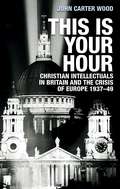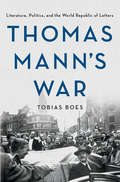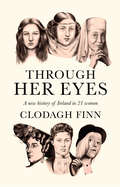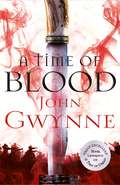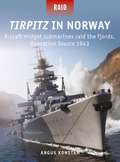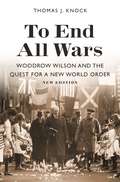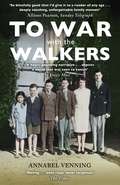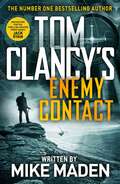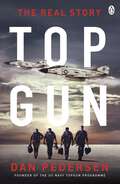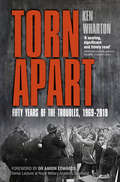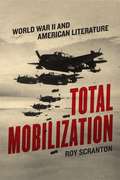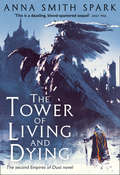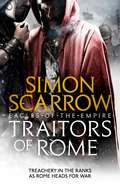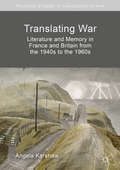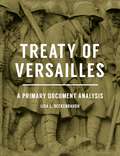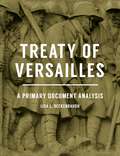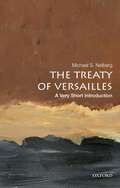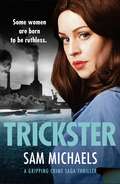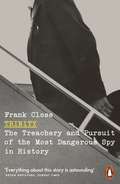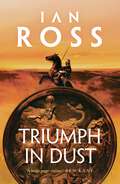- Table View
- List View
This is your hour: Christian intellectuals in Britain and the Crisis of Europe, 1937–49
by John Carter WoodIn the 1930s and 1940s – amid the crises of totalitarianism, war and a perceived cultural collapse in the democratic West – a high-profile group of mostly Christian intellectuals met to map out ‘middle ways’ through the ‘age of extremes’. Led by the missionary and ecumenist Joseph H. Oldham, the group included prominent writers, thinkers and activists such as T. S. Eliot, John Middleton Murry, Karl Mannheim, John Baillie, Alec Vidler, H. A. Hodges, Christopher Dawson, Kathleen Bliss and Michael Polanyi. The ‘Oldham group’ saw faith as a uniquely powerful resource for social and cultural renewal, and it represents a fascinating case study of efforts to renew freedom in a dramatic confrontation with totalitarianism. The group’s story will appeal to those interested in the cultural history of the Second World War and the issue of applying faith to the ‘modern’ social order.
Thomas Mann's War: Literature, Politics, and the World Republic of Letters
by Tobias BoesIn Thomas Mann's War, Tobias Boes traces how the acclaimed and bestselling author became one of America's most prominent anti-fascists and the spokesperson for a German cultural ideal that Nazism had perverted.Thomas Mann, winner of the 1929 Nobel Prize in literature and author of such world-renowned novels as Buddenbrooks and The Magic Mountain, began his self-imposed exile in the United States in 1938, having fled his native Germany in the wake of Nazi persecution and public burnings of his books. Mann embraced his role as a public intellectual, deftly using his literary reputation and his connections in an increasingly global publishing industry to refute Nazi propaganda. As Boes shows, Mann undertook successful lecture tours of the country and penned widely-read articles that alerted US audiences and readers to the dangers of complacency in the face of Nazism's existential threat. Spanning four decades, from the eve of World War I, when Mann was first translated into English, to 1952, the year in which he left an America increasingly disfigured by McCarthyism, Boes establishes Mann as a significant figure in the wartime global republic of letters.
Through Her Eyes: A New History of Ireland in 21 Women
by Clodagh FinnTold through the prism of the lives of 21 extraordinary women, this remarkable book offers an alternative vision of Irish history – one that puts the spotlight on women whose contributions have been forgotten or overlooked.Author Clodagh Finn travels through the ages to ‘meet’, among others, Macha, the Celtic horse goddess of Ulster; St Dahalin, an early Irish saint and miracle worker; Jo Hiffernan, painter and muse to the artists Whistler and Courbet; Jennie Hodgers, a woman who fought as a male soldier in the American Civil War; Sr Concepta Lynch, businesswoman, Dominican sister and painter of a unique Celtic shrine; the Overend sisters, farmers, charity workers and motoring enthusiasts; and Rosemary Gibb, athlete, social worker, clown and accomplished magician.From a Stone Age farmer who lived in Co. Clare more than 5,000 years ago to the modern-day founder of a 3D printing company, this book opens a fascinating window onto the life and times of some amazing women whose stories were shaped by the centuries in which they lived.
A Time of Blood (Of Blood and Bone #2)
by John GwynneDefy the darkness. Defend the light . . . At the battle of Starstone Lake, Drem and his friends witnessed horrors they’ll never forget. They saw magic warping men into beasts and a demon rise from the dead, creating something new and terrifying. So they flee to warn the Order of the Bright Star. But the demons’ high priestess, Fritha, is determined to hunt them down. Concealed in Forn Forest, Riv struggles to understand her half-breed heritage. She represents the warrior angels’ biggest secret, one whichcould break their society. So when she’s found by the Ben-Elim’s high captain, he goes in for the kill.Meanwhile, demonic forces are gathering a mighty war-host, to crush their enemies and rule the world of man. All while the Ben-Elim are fractured and facing betrayal. Like heroes of old, Riv, Drem and the Bright Star’s warriors must battle to save their land. But can the light triumph when the dark is rising?A Time of Blood (Of Blood and Bone: Book Two) is the spectacular follow-up to A Time of Dread by John Gwynne. 'This is extraordinarily good, an epic feat of the imagination. In this series Gwynne is setting a new benchmark in fantasy. I’d love to see it on screen'Giles Kristian'A great read that accelerates the pace and goes one up on its excellent predecessor . . . Exciting, action-packed fantasy'Mark Lawrence
Tirpitz in Norway: X-craft midget submarines raid the fjords, Operation Source 1943 (Raid #51)
by Angus KonstamIn September 1943, under the cover of darkness, six British midget submarines crept into the heart of enemy territory, penetrating a heavily guarded Norwegian fjord in an attempt to eliminate the threat of the powerful German battleship, the Tirpitz. Numerous previous attempts to attack the ship from both air and sea had failed, and this mission was carefully strategized, and undertaken by skilled operatives who had undergone extensive training in an isolated sea loch. Though five of the six X-Craft submarines were either lost or captured, two crews had just enough time to lay their explosive charges, which detonated after they were forced to the surface, putting the Tirpitz out of action for a crucial six-month period. Masterminded from a top-secret naval headquarters on the east coast of Scotland, Operation Source has been memorialised as one of the most daring naval raids of World War II.This new study tells the complete story of this epic operation in unparalleled detail, supported by full-colour illustrations and contemporary photography.
To End All Wars, New Edition: Woodrow Wilson and the Quest for a New World Order
by Thomas KnockA close look at Woodrow Wilson’s political thought and international diplomacyIn the widely acclaimed To End All Wars, Thomas Knock provides an intriguing, often provocative narrative of Woodrow Wilson’s epic quest for a new world order. This book follows Wilson’s thought and diplomacy from his policy toward revolutionary Mexico, through his dramatic call for “Peace without Victory” in World War I, to the Senate’s rejection of the League of Nations. Throughout, Knock reinterprets the origins of internationalism in American politics, sweeping away the view that isolationism was the cause of Wilson’s failure and revealing the role of competing visions of internationalism—conservative and progressive.
To War With the Walkers: Three Soldiers, a War Bride, a Nurse and a Doctor: One Family's Extraordinary Story of Survival in the Second World War
by Annabel Venning'A moving book . . . This account of one family's experience takes us to hidden crannies of the war that more official accounts might not bother with . . . Once read, never forgotten.'THE TIMES'A heart-pounding narrative that feels fresh . . . Seeing the war through the Walkers' eyes, you realise what a truly extraordinary generation it was, and how much we owe them.'DAILY MAIL'A sensationally good book . . . I see reflections of my own family, and beyond them, like those mirrors tilted slightly into infinity, I can see literally miles of others lined up, inexorably linked forever by a shared experience . . . this is an exceptional book and should be required reading in modern history classes.'JOANNA LUMLEY~How would it feel if all your sons and daughters were caught up in war?What would it be like to spend six years fearing what a telegram might bring?That was the heart-wrenching reality faced by so many families throughout the Second World War, including the parents of the Walker children. From the Blitz to the battlefields of Europe and the Far East, this is the remarkable story of four brothers and two sisters who were swept along by the momentous events of the war. Harold was a surgeon in a London hospital alongside his sister Ruth, a nurse, when the bombs began to fall in 1940. Peter was captured in the fall of Singapore. Edward fought the Germans in Italy, and Walter the Japanese in Burma, while in London, glamorous Bee hoped for lasting happiness with an American airman. In To War With the Walkers, Annabel Venning, Walter's granddaughter, tells the enthralling and moving tales of her relatives, six ordinary young men and women, who each faced an extraordinary struggle for survival.
Tom Clancy's Enemy Contact (Jack Ryan Jr)
by Mike MadenREAD THE INSPIRATION FOR THE AMAZON PRIME HIT-SERIES JACK RYAN Jack Ryan, Jr's race to stop an international criminal conspiracy is intertwined with the fate of an old friend in this blistering new thriller. On a remote island off the coast of Argentina, a team of elite counter-terror commandos prepare to assault a newly-discovered Hezbollah hideout. What they don't expect is to be brutally ambushed themselves - slaughtered with no survivors. And what they don't realise is that, on screens around the world, the enemies of the West are watching. Back in Washington DC, the growing obstruction in the Senate has reached crippling levels, as a crucial treaty to strength NATO in Eastern Europe is inexplicably blocked.Suspecting that key politicians may have been compromised - but aware of the explosive consequences of making such accusations in public - the President dispatches Jack Ryan Jr to Poland to investigate. In Warsaw, Jack partners with beautiful and brilliant Polish agent Liliana Zaleski, and it's not long before they find evidence of a tangled web of corruption. But what Jack and Liliana don't realise is that this conspiracy stretches further than they could ever have imagined, and the danger has already crept terrifyingly close to home...Praise for Tom Clancy: 'Constantly taps the current world situation for its imminent dangers and spins them into an engrossing tale' New York Times 'Heart-stopping action . . . entertaining and eminently topical' Washington Post'A virtuoso display of page-turning talent' Sunday Express
Topgun: An American Story
by Dan Pedersen"Top Gun" became a household name with the worldwide success of the film of the same title. The 1986 blockbuster starring Tom Cruise as a hotshot U.S. Navy fighter pilot was so popular (drawing $356 million worldwide) that recruiters set up desks in theaters that were showing it, looking to attract the next generation of combat aviators. The movie did for Navy pilots what The Right Stuff did for astronauts.With the 50th anniversary of the establishment of the real TOPGUN-as the U.S. Navy Fighter Weapons program was known-approaching in 2019, and with Jerry Bruckheimer's sequel, Top Gun: Maverick, set to shoot next year, this is the time to publish the real story of the actual risk takers, disruptors, and innovators who revolutionized the art of aerial combat and created the center for excellence and incubator of leadership that thrives to this day.Here is the inside story of TOPGUN, told by the man who was picked to lead it at the start, from war to peace and back to war again, on and off the flight line, and through all six of our decades. Though Pedersen was a part of it at the beginning, some other great pilots carried on our work and he is eager to pay them tribute and make the book a celebration of our whole community. It's a great story, full of interesting characters and exciting history that American should know.
Torn Apart: Fifty Years of the Troubles, 1969-2019
by Ken WhartonAs the fiftieth anniversary of the Troubles approaches, Ken Wharton takes a thorough look at the start of the Troubles, the precursors and the explosion of violence in 1969 that would last until the Good Friday Agreement in 1998 and cost 50,000 casualties and nearly 2,000 civilians’ lives across Northern Ireland, the Republic and England. Utterly condemnatory of the Provisional IRA and their ilk, Wharton pulls no punches in his assessment of the situation then and seeks to dismiss apologists today. His sympathy lies first with those tasked with keeping order in the province, but also with the innocent civilians caught up in thirty years of immense bloodshed. Based on the powerful testimony of those who were there at the time, The Troubles is written with passion and detailed knowledge of the experience of the squaddie.
Total Mobilization: World War II and American Literature
by Roy ScrantonSince World War II, the story of the trauma hero—the noble white man psychologically wounded by his encounter with violence—has become omnipresent in America’s narratives of war, an imaginary solution to the contradictions of American political hegemony. In Total Mobilization, Roy Scranton cuts through the fog of trauma that obscures World War II, uncovering a lost history and reframing the way we talk about war today. Considering often overlooked works by James Jones, Wallace Stevens, Martha Gellhorn, and others, alongside cartoons and films, Scranton investigates the role of the hero in industrial wartime, showing how such writers struggled to make sense of problems that continue to plague us today: the limits of American power, the dangers of political polarization, and the conflicts between nationalism and liberalism. By turning our attention to the ways we make war meaningful—and by excavating the politics implicit within the myth of the traumatized hero—Total Mobilization revises the way we understand not only World War II, but all of postwar American culture.
Total Mobilization: World War II and American Literature
by Roy ScrantonSince World War II, the story of the trauma hero—the noble white man psychologically wounded by his encounter with violence—has become omnipresent in America’s narratives of war, an imaginary solution to the contradictions of American political hegemony. In Total Mobilization, Roy Scranton cuts through the fog of trauma that obscures World War II, uncovering a lost history and reframing the way we talk about war today. Considering often overlooked works by James Jones, Wallace Stevens, Martha Gellhorn, and others, alongside cartoons and films, Scranton investigates the role of the hero in industrial wartime, showing how such writers struggled to make sense of problems that continue to plague us today: the limits of American power, the dangers of political polarization, and the conflicts between nationalism and liberalism. By turning our attention to the ways we make war meaningful—and by excavating the politics implicit within the myth of the traumatized hero—Total Mobilization revises the way we understand not only World War II, but all of postwar American culture.
Total Mobilization: World War II and American Literature
by Roy ScrantonSince World War II, the story of the trauma hero—the noble white man psychologically wounded by his encounter with violence—has become omnipresent in America’s narratives of war, an imaginary solution to the contradictions of American political hegemony. In Total Mobilization, Roy Scranton cuts through the fog of trauma that obscures World War II, uncovering a lost history and reframing the way we talk about war today. Considering often overlooked works by James Jones, Wallace Stevens, Martha Gellhorn, and others, alongside cartoons and films, Scranton investigates the role of the hero in industrial wartime, showing how such writers struggled to make sense of problems that continue to plague us today: the limits of American power, the dangers of political polarization, and the conflicts between nationalism and liberalism. By turning our attention to the ways we make war meaningful—and by excavating the politics implicit within the myth of the traumatized hero—Total Mobilization revises the way we understand not only World War II, but all of postwar American culture.
Total Mobilization: World War II and American Literature
by Roy ScrantonSince World War II, the story of the trauma hero—the noble white man psychologically wounded by his encounter with violence—has become omnipresent in America’s narratives of war, an imaginary solution to the contradictions of American political hegemony. In Total Mobilization, Roy Scranton cuts through the fog of trauma that obscures World War II, uncovering a lost history and reframing the way we talk about war today. Considering often overlooked works by James Jones, Wallace Stevens, Martha Gellhorn, and others, alongside cartoons and films, Scranton investigates the role of the hero in industrial wartime, showing how such writers struggled to make sense of problems that continue to plague us today: the limits of American power, the dangers of political polarization, and the conflicts between nationalism and liberalism. By turning our attention to the ways we make war meaningful—and by excavating the politics implicit within the myth of the traumatized hero—Total Mobilization revises the way we understand not only World War II, but all of postwar American culture.
Total Mobilization: World War II and American Literature
by Roy ScrantonSince World War II, the story of the trauma hero—the noble white man psychologically wounded by his encounter with violence—has become omnipresent in America’s narratives of war, an imaginary solution to the contradictions of American political hegemony. In Total Mobilization, Roy Scranton cuts through the fog of trauma that obscures World War II, uncovering a lost history and reframing the way we talk about war today. Considering often overlooked works by James Jones, Wallace Stevens, Martha Gellhorn, and others, alongside cartoons and films, Scranton investigates the role of the hero in industrial wartime, showing how such writers struggled to make sense of problems that continue to plague us today: the limits of American power, the dangers of political polarization, and the conflicts between nationalism and liberalism. By turning our attention to the ways we make war meaningful—and by excavating the politics implicit within the myth of the traumatized hero—Total Mobilization revises the way we understand not only World War II, but all of postwar American culture.
Total Mobilization: World War II and American Literature
by Roy ScrantonSince World War II, the story of the trauma hero—the noble white man psychologically wounded by his encounter with violence—has become omnipresent in America’s narratives of war, an imaginary solution to the contradictions of American political hegemony. In Total Mobilization, Roy Scranton cuts through the fog of trauma that obscures World War II, uncovering a lost history and reframing the way we talk about war today. Considering often overlooked works by James Jones, Wallace Stevens, Martha Gellhorn, and others, alongside cartoons and films, Scranton investigates the role of the hero in industrial wartime, showing how such writers struggled to make sense of problems that continue to plague us today: the limits of American power, the dangers of political polarization, and the conflicts between nationalism and liberalism. By turning our attention to the ways we make war meaningful—and by excavating the politics implicit within the myth of the traumatized hero—Total Mobilization revises the way we understand not only World War II, but all of postwar American culture.
The Tower of Living and Dying (Empires of Dust #2)
by Anna Smith SparkKING OF RUIN. KING OF DUST AND SHADOWS. KING OF DEATH. HE WILL RULE ALL. THE KING IS COMING.
Traitors of Rome: Treachery In The Ranks As Rome Heads For War (Eagles Of The Empire Ser.)
by Simon ScarrowThe enthralling new Cato and Macro adventure in Simon Scarrow's bestselling Eagles of the Empire series. Not to be missed by readers of Conn Iggulden and Bernard Cornwell. AD 56. Battle-hardened veterans of the Roman army Tribune Cato and Centurion Macro are garrisoned at the eastern border, aware that their movements are constantly monitored by spies from dangerous, mysterious Parthia. But the enemy within could be the deadliest threat to the Legion ... and the Empire. There's a traitor in the ranks. Rome shows no mercy to those who betray their comrades, and the Empire. But first the guilty man must be discovered. Cato and Macro are in a race against time to expose the truth, while the powerful enemy over the border waits to exploit any weaknesses in the Legion. The traitor must die ... Praise for Simon Scarrow's bestselling novels: 'Blood, gore, political intrigue...A historical fiction thriller that'll have you reaching for your gladius' Daily Sport'Gripping... ferocious and compelling' Daily Express'Brilliantly told adventures ... Roman soldiering at its very best - even by Scarrow's high standards' Sunday Sport
Translating War: Literature and Memory in France and Britain from the 1940s to the 1960s (Palgrave Studies in Languages at War)
by Angela KershawThis book examines the role played by the international circulation of literature in constructing cultural memories of the Second World War. War writing has rarely been read from the point of view of translation even though war is by definition a multilingual event, and knowledge of the Second World War and the Holocaust is mediated through translated texts. Here, the author opens up this field of research through analysis of several important works of French war fiction and their English translations. The book examines the wartime publishing structures which facilitated literary exchanges across national borders, the strategies adopted by translators of war fiction, the relationships between translated war fiction and dominant national memories of the war, and questions of multilingualism in war writing. In doing so, it sheds new light on the political and ethical questions that arise when the trauma of war is represented in fiction and through translation. This engaging work will appeal to students and scholars of translation, cultural memory, war fiction and Holocaust writing.
Treaty of Versailles: A Primary Document Analysis
by Lisa L. BeckenbaughAn indispensable resource on the Treaty of Versailles, one of the most influential and controversial documents in history, this book explains how the treaty tried to solve the complex issues that emerged from the destruction of World War I.This carefully curated primary source collection includes roughly 60 documents related to the signing of the Treaty of Versailles. By collecting all of the most significant documents in one volume, it allows readers to hear the original arguments surrounding the treaty and to explore the voices of the people involved at the Paris Peace Conference. Moreover, it allows readers to engage with the documents so as to better understand the complex motivations and issues coming out of World War I and highlights the differences between the victors and identifies the problems many countries had with the treaty before it was even signed.The documents are organized in chronological order, providing a blueprint to help students to understand all of the significant events that led to the treaty, as well as the vast repercussions of the treaty itself. In addition to the Treaty of Versailles itself, documents include such significant primary sources as the Sykes-Picot Agreement, the Balfour Declaration, the Treaty of Brest-Litovsk, President Woodrow Wilson's Fourteen Points, and Germany's response to the treaty.
Treaty of Versailles: A Primary Document Analysis
by Lisa L. BeckenbaughAn indispensable resource on the Treaty of Versailles, one of the most influential and controversial documents in history, this book explains how the treaty tried to solve the complex issues that emerged from the destruction of World War I.This carefully curated primary source collection includes roughly 60 documents related to the signing of the Treaty of Versailles. By collecting all of the most significant documents in one volume, it allows readers to hear the original arguments surrounding the treaty and to explore the voices of the people involved at the Paris Peace Conference. Moreover, it allows readers to engage with the documents so as to better understand the complex motivations and issues coming out of World War I and highlights the differences between the victors and identifies the problems many countries had with the treaty before it was even signed.The documents are organized in chronological order, providing a blueprint to help students to understand all of the significant events that led to the treaty, as well as the vast repercussions of the treaty itself. In addition to the Treaty of Versailles itself, documents include such significant primary sources as the Sykes-Picot Agreement, the Balfour Declaration, the Treaty of Brest-Litovsk, President Woodrow Wilson's Fourteen Points, and Germany's response to the treaty.
The Treaty of Versailles: A Very Short Introduction (Very Short Introductions)
by Michael S. NeibergSigned on June 28, 1919 between Germany and the principal Allied powers, the Treaty of Versailles formally ended World War I. Problematic from the very beginning, even its contemporaries saw the treaty as a mediocre compromise, creating a precarious order in Europe and abroad and destined to fall short of ensuring lasting peace. At the time, observers read the treaty through competing lenses: a desire for peace after five years of disastrous war, demands for vengeance against Germany, the uncertain future of colonialism, and, most alarmingly, the emerging threat of Bolshevism. A century after its signing, we can look back at how those developments evolved through the twentieth century, evaluating the treaty and its consequences with unprecedented depth of perspective. The author of several award-winning books, Michael S. Neiberg provides a lucid and authoritative account of the Treaty of Versailles, explaining the enormous challenges facing those who tried to put the world back together after the global destruction of the World War I. Rather than assessing winners and losers, this compelling book analyzes the many subtle factors that influenced the treaty and the dominant, at times ambiguous role of the "Big Four" leaders: Woodrow Wilson of the United States, David Lloyd George of Great Britain, Vittorio Emanuele Orlando of Italy, and Georges Clémenceau of France. The Treaty of Versailles was not solely responsible for the catastrophic war that crippled Europe and the world just two decades later, but it played a critical role. As Neiberg reminds us, to understand decolonization, World War II, the Cold War, and even the complex world we inhabit today, there is no better place to begin than with World War I and the treaty that tried, and perhaps failed, to end it. ABOUT THE SERIES: The Very Short Introductions series from Oxford University Press contains hundreds of titles in almost every subject area. These pocket-sized books are the perfect way to get ahead in a new subject quickly. Our expert authors combine facts, analysis, perspective, new ideas, and enthusiasm to make interesting and challenging topics highly readable.
Trickster (Georgina Garrett Series #1)
by Sam Michaels'Sam Michaels is an exciting new author and Trickster is a must-read! Captivating and fast-paced, this first book in the Georgina Garrett series is a real page-turner that I highly recommend' Sunday Times bestselling author, Kitty Neale. Georgina Garrett was born to be ruthless and she's about to earn her reputation. As World War One is announced a baby girl is born. Little do people know that she's going to grow up to rule the streets of Battersea. From a family steeped in poverty the only way to survive is with street smarts. With a father who steals for a living, a grandmother who's a woman of the night and a mother long dead, Georgina was never in for an easy life. But after a tragic event left her father shaken he makes a decision that will change the course of all their lives – to raise Georgina as George, ensuring her safety but marking the start of her life of crime... This is the first book in the thrilling new Georgina Garrett series. Praise for Trickster: 'A terrific debut – read it and be hooked!' Jessie Keane, bestselling author of Lawless.
Trinity: The Treachery and Pursuit of the Most Dangerous Spy in History
by Frank Close'Everything about this story is astounding' Bryan Appleyard, Sunday Times"Trinity" was the codename for the test explosion of the atomic bomb in New Mexico on 16 July 1945. Trinity is now also the extraordinary story of the bomb's metaphorical father, Rudolf Peierls; his intellectual son, the atomic spy, Klaus Fuchs, and the ghosts of the security services in Britain, the USA and USSR.Against the background of pre-war Nazi Germany, the Second World War and the following Cold War, the book traces how Peierls brought Fuchs into his family and his laboratory, only to be betrayed. It describes in unprecedented detail how Fuchs became a spy, his motivations and the information he passed to his Soviet contacts, both in the UK and after he went with Peierls to join the Manhattan Project at Los Alamos in 1944. Frank Close is himself a distinguished nuclear physicist: uniquely, the book explains the science as well as the spying.Fuchs returned to Britain in August 1946 still undetected and became central to the UK's independent effort to develop nuclear weapons. Close describes the febrile atmosphere at Harwell, the nuclear physics laboratory near Oxford, where many of the key players were quartered, and the charged relationships which developed there. He uncovers fresh evidence about the role of the crucial VENONA signals decryptions, and shows how, despite mistakes made by both MI5 and the FBI, the net gradually closed around Fuchs, building an intolerable pressure which finally cracked him.The Soviet Union exploded its first nuclear device in August 1949, far earlier than the US or UK expected. In 1951, the US Congressional Committee on Atomic Espionage concluded, 'Fuchs alone has influenced the safety of more people and accomplished greater damage than any other spy not only in the history of the United States, but in the history of nations'. This book is the most comprehensive account yet published of these events, and of the tragic figure at their centre.
Triumph in Dust (Twilight of Empire #6)
by Ian RossFerocity, heroism, and savage bloodshed: the next gripping instalment in the Twilight of Empire series. For fans of Ben Kane and Conn Iggulden. When the simmering conflict between Rome and Persia threatens to reignite into open war, there is only one man the Emperor Constantine can trust to hold the eastern frontier. Aurelius Castus, retired general of the empire, has fought long and hard for Rome. When the summons comes to command an army once more, he obeys with a heavy heart. But is he still the fearsome fighting machine of old? As tragedy strikes the imperial household, Castus must race to defend the last bulwark standing against the might of Persia. Castus knows that the fight ahead will be the fiercest he has ever known, and will very probably be his last. 'I was immersed from the very first page. Wonderful writing. Rich and evocative, astute and assured. Great stuff!' Giles Kristian, bestselling author of Lancelot.
